- 05/10/2022
How to use acrylic paint
How to use acrylic paint
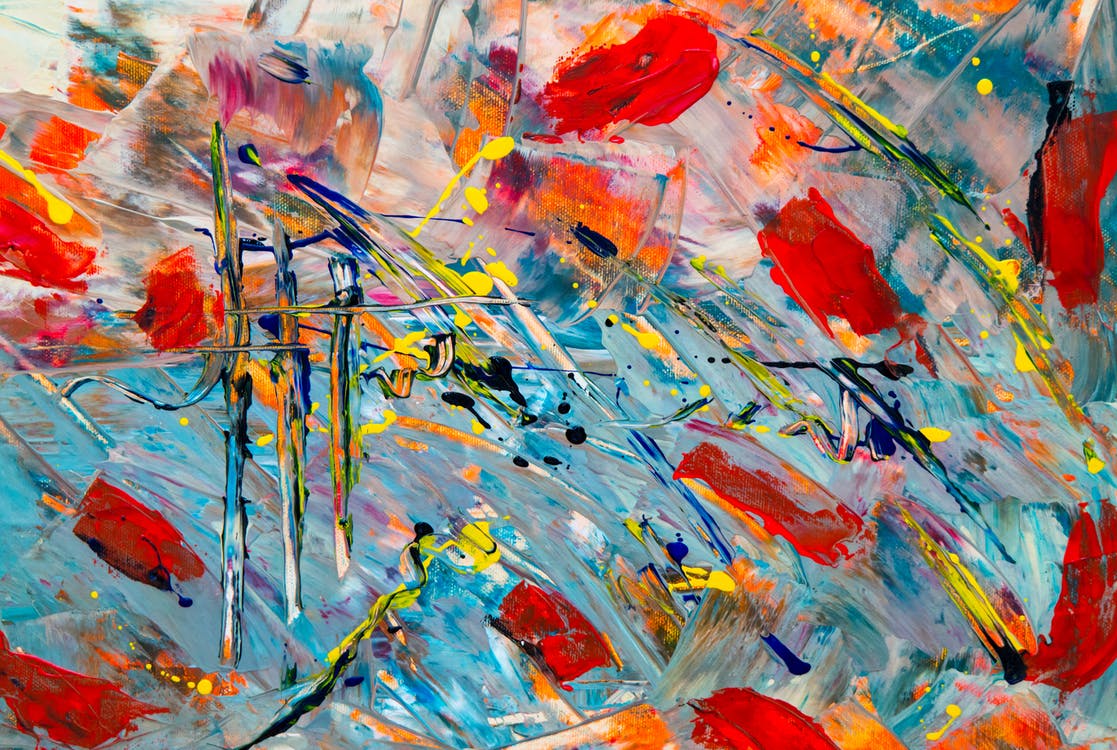

Created in the 1940s, acrylic paint is a versatile material that’s completely unique in the way is looks and behaves. Acrylics are water-based, so flow easily and allow total control for detailed artwork with powerful colours.
If you’re interested in getting started with acrylics, we stock a massive range of artist quality paint from professional brands like Amsterdam, Daler Rowney, Pebeo and Winsor & Newton.
Paint brushes to use with acrylic paint
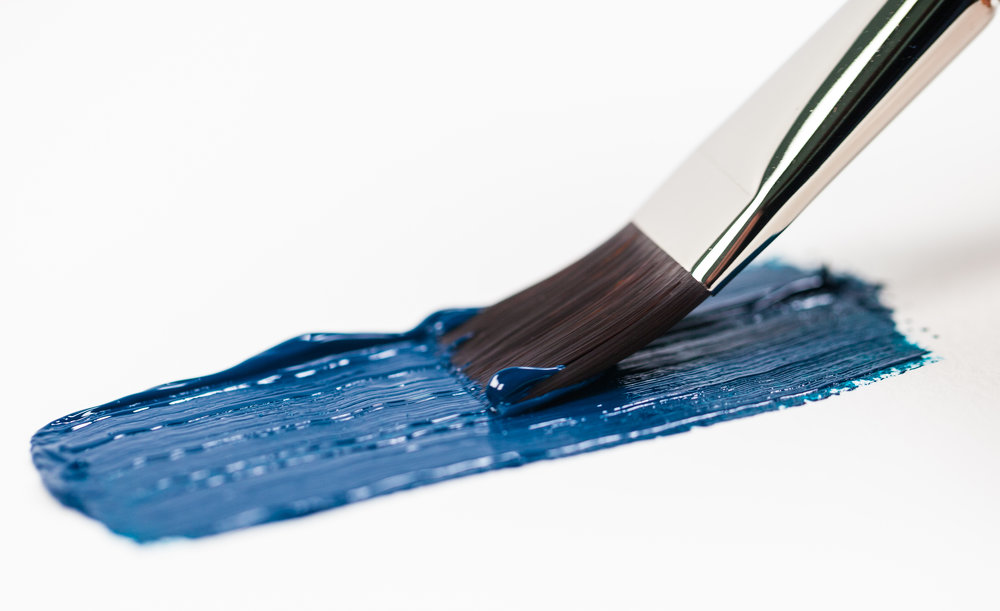

You’ll get the best from acrylic paint by using a specially designed acrylic brush.
Synthetic brushes are typically used for acrylic paint, as they offer a smooth flow and retain their shape after lots of uses. Most acrylic brushes are useable with oil paint, too.
There are a few main brands that offer acrylic brushes:
Artmaster – short-handled brushes that offer brilliant control.
Royal & Langnickel – if you’re looking to experiment, or work at a wider scale, try a range of flat and angular brushes.
Art Shop Skipton – we offer our own range of fantastic quality acrylic paint brushes. A set of six synthetic acrylic brushes is all you’ll need to get started.
Top tip: It’s a good idea to invest a range of brushes of different sizes, do you can apply base layers and detail more easily.
What you'll need to paint with acrylic
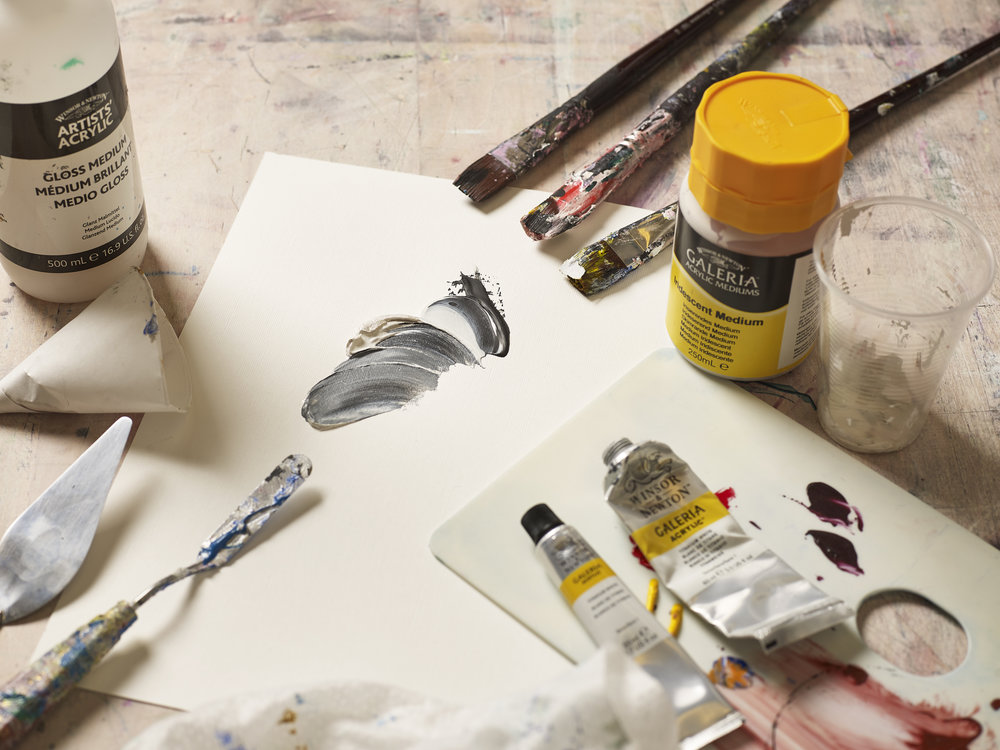

Now you’ve got your brush sorted, there are a few other items you’ll need before you get started.
Acrylic Paper
Using normal paper with acrylic paper won’t offer the best results. As acrylic is thick, you’ll need a robust paper that can handle the weight. You’ll want paper with a heavy thickness – 300gsm or above.
Canvas
If you’d rather work on canvas, make sure the canvas you pick is gesso coated. Gesso works as a primer, which causes the paint to flow correctly and stick to the surface.
Sketch out your composition
Painting with acrylics is simple. You’ll first want to sketch out your composition with pencil – acrylic is thick with stronger colours, so don’t worry about messing up or using a light pencil.
Top tip: Unlike watercolour, for example, you’ll be able to totally cover any pencil sketches as you work.
Using mediums
You can use mediums with acrylic paint to affect how drying time and consistency. Acrylics can dry quickly, so a slow drying medium can give you more time to work and produce a fine, glossy finish.
Varnish
As acrylic is water-based, it’s important to seal your artwork to protect it in the future. That’s not the only reason to protect your work with varnish – dust particles and UV rays from the sun can cause discolouration over time.
Once your painting is completely dry, a gloss varnish can be used to seal it, forming a protective barrier that will keep it pristine. You might need to apply two layers to complete coverage.
Tips for painting with acrylic
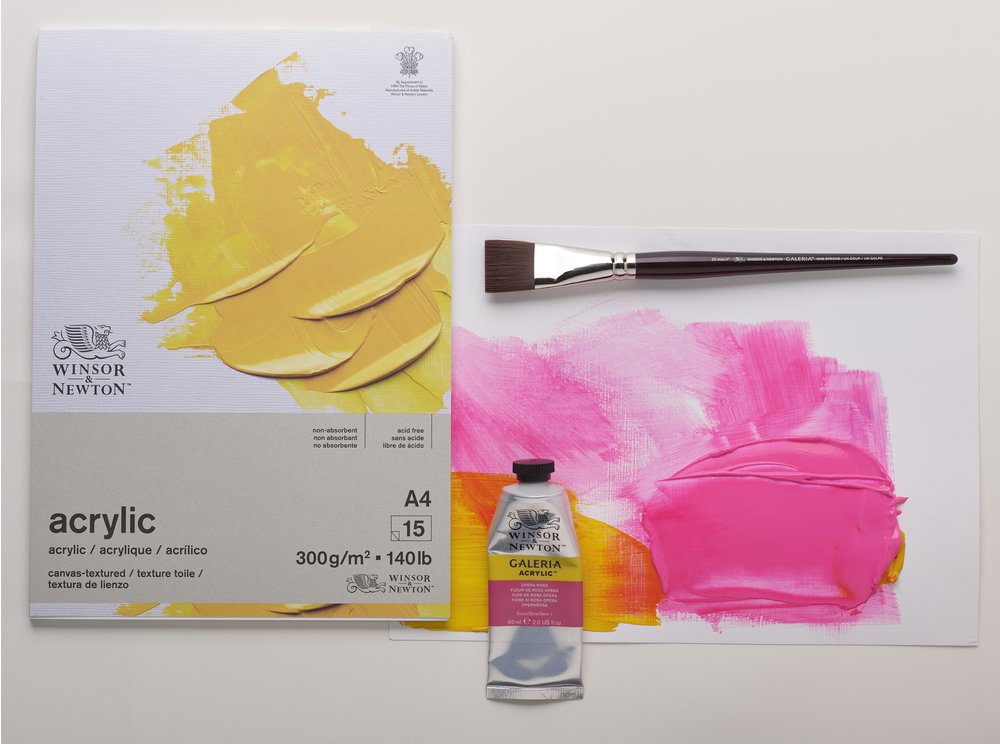

Keep your paint wet
Acrylics drying out is a classic issue that crops up for beginner’s and experienced painters alike. Keep your palette from drying out by reapplying water every fifteen or twenty minutes – once acrylic dries it can be difficult to reactivate.
Top tip: A plant mister is perfect for keeping your paint useable – spray your palette periodically to avoid drying out.
Thin your undercoats
When adding an undercoat, it’s a good idea to thin your paint before. This is to shorten the drying time and allow you to cover a wide surface area more easily.
Acrylic paint can be thinned using a medium – which won’t dilute the colour. Try a pouring medium, mixed in a one to five ratio.
Take care of your brushes
Taking good care of your brushes is the key to maintaining them. That means cleaning them thoroughly and drying them after each use. Acrylic can dry quickly, so a brush can be damaged if the paint solidifies on the bristles.
Use a palette
It’s rare that you’ll only need the colours than come in your set. Keep a palette handy to mix different shades to find what you need. Try testing out your new colour on a spare piece of paper and wait for it to dry – acrylic can dry a slightly different colour than it appears.
Use two pots of water
Use two water pots with acrylic paint – one for washing your brush clean between colours, one for thinning your paint. Mixing water into acrylic will help you achieve greater flow.
How long does acrylic paint take to dry?
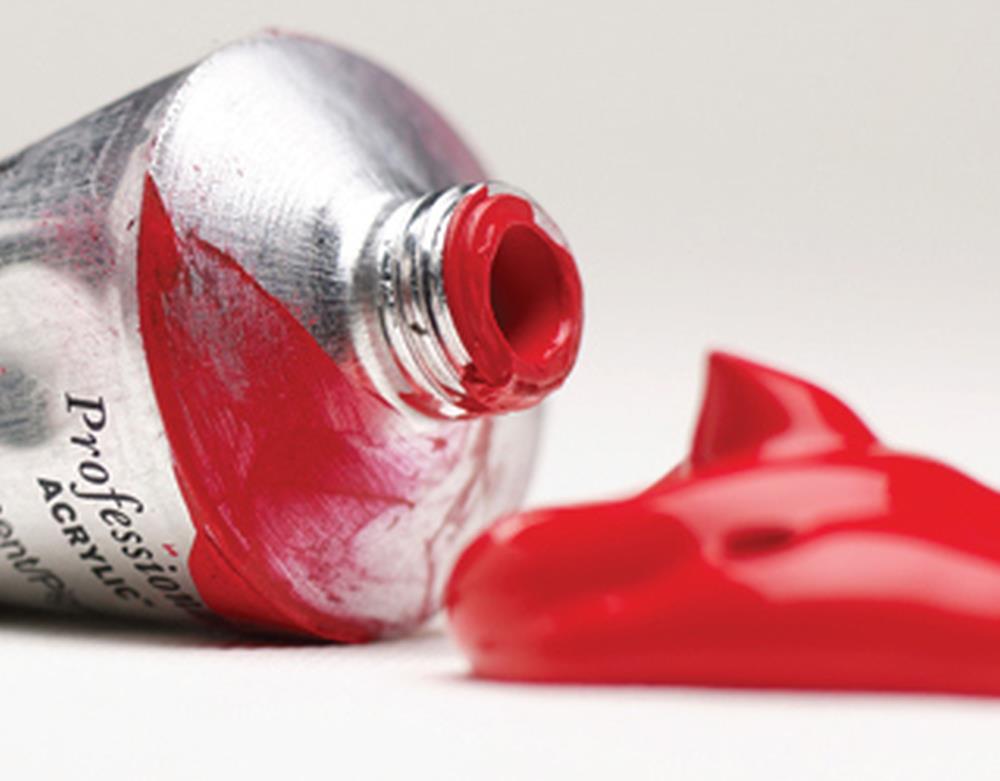

Acrylic paint will dry fairly quickly. A thin layer of professional quality acrylic paint will take around half an hour to dry. Thicker layers could take upwards of an hour to dry completely.
While wet, acrylic paint can smudge easily. Make sure you wait until each layer dried between adding more colours – and be careful about resting your hand on the page.
There are many things that can cause acrylic paint to dry more slowly to be aware of:
Temperature – if your room is warm, acrylic paint will dry more quickly.
Mediums – if you use mediums, like stand oil for example, your paint will dry a lot slower.
Thick coats – paint over 1mm will take a lot longer to dry than thinner layers.
Humidity – moisture in the air will also extend drying times in acrylic paint.
Top tip: Some acrylic paint will darken as it dries, so test out a colour on a scrap of paper to understand the how the hue might change once it’s dry.
If you’re ready to get started with acrylic paint, we offer a wide range of brilliant acrylic paint sets, brushes, pads and canvas.
 Same Day Dispatch Mon-Fri Before 2PM
Same Day Dispatch Mon-Fri Before 2PM

 Free UK Delivery on Orders Over £50
Free UK Delivery on Orders Over £50

